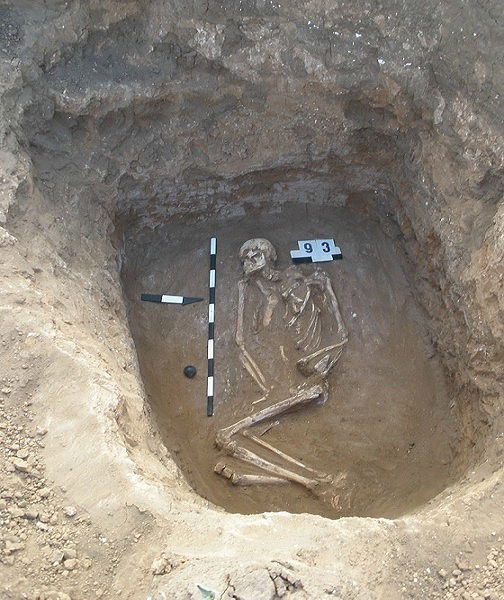Horseback riding is a challenging physical activity, but can it change the very structure of your skeleton? Archaeologists from the University of Colorado Boulder worked to answer this question in a new study. Their findings suggest that the answer is more nuanced than previously thought. Published in Science Advances, the study reveals that horseback riding can leave subtle marks on the human skeleton but stops short of definitively linking skeletal changes to horse riding alone.
Led by Lauren Hosek, an assistant professor in CU Boulder’s Department of Anthropology, the team examined a wide range of evidence, from medical studies of modern equestrians to skeletal remains spanning thousands of years. They found that activities like horseback riding can alter the shape of bones, particularly the hip joint, but these changes aren’t exclusive to riding. Sitting for long periods or engaging in other repetitive activities can also lead to similar transformations.
“In archaeology, there are vanishingly few instances in which we can tie a particular activity unequivocally to skeletal changes,” Hosek explained in a recent statement. The findings challenge long-standing theories about the origins of horseback riding and the role of horses in human history.
The History of Horsemanship-Challenging Old Theories
There have been many debates about the effects of horseback riding on human history, particularly regarding the domestication of horses. One long-standing theory, known as the Kurgan hypothesis, suggests that the Yamnaya people near the Black Sea were the first to ride horses, around 3500 B.C. According to this theory, the domestication of horses played a pivotal role in spreading the languages that would later evolve into many modern Indo-European languages, including English and French.
William Taylor, a co-author of the study and curator of archaeology at CU Boulder’s Museum of Natural History, noted that the Kurgan hypothesis hinges on skeletal evidence from Yamnaya remains. Proponents of the theory have pointed to the wear and tear on Yamnaya skeletons as proof that these ancient people rode horses across Eurasia.
However, the new research challenges this view. While horseback riding can leave marks on human skeletons, the study argues that skeletal changes alone cannot definitively prove that the Yamnaya people were horse riders. Taylor emphasized that more comprehensive evidence, including genetic data and horse remains, is required to determine when humans first started using horses for transportation.
“Human skeletons alone are not going to be enough evidence,” Hosek said. “We need to couple that data with evidence coming out of genetics and archaeology and by looking at horse remains, too.”
Studying the Effects of Horseback Riding
The researchers discovered that horseback riding can subtly change the structure of the hip joint. For example, prolonged flexing of the legs at the hip, such as during long rides, can cause the hip’s ball and socket joint to rub together, eventually elongating the socket into an oval shape. However, similar skeletal changes can occur from other activities, such as long sitting or riding in carriages.
Hosek pointed out that even 20th-century Catholic nuns, who never rode horses, showed similar hip joint alterations after spending extended periods in carriages traveling across the American West. This evidence underscores the complexity of interpreting skeletal changes in archaeology, as other modes of transport—such as cattle or donkey carts—could cause similar bone transformations.
“Over time, this repetitive, intense pressure from that kind of jostling in a flexed position could cause skeletal changes,” Hosek said.


Challenging Previous Timelines
The earliest undisputed evidence of horse domestication for transportation is around 4,000 years ago near the Ural Mountains of Russia, where archaeologists have unearthed horses, harnesses, and chariots. However, the exact timeline of when humans began riding horses remains murky, with some evidence suggesting it could have occurred earlier in different regions.
Taylor noted that the study casts doubt that the Yamnaya people, who lived around 3500 B.C., were the first horse riders.
“At least for now, none of these lines of evidence suggest that the Yamnaya people had domestic horses,” he said in a recent statement.
While the findings complicate our understanding of when horseback riding began, they also highlight the importance of using a multidisciplinary approach to investigate human history. Researchers hope to paint a more accurate picture of the relationship between humans and horses by combining skeletal analysis with other archaeological and genetic evidence.
As Taylor puts it, “Much of our understanding of both the ancient and modern worlds hinges on when people started using horses for transportation.”
For now, the mystery of when humans first took to the saddle remains unresolved—but studies like this one bring us closer to answering that question.
Kenna Hughes-Castleberry is the Science Communicator at JILA (a world-leading physics research institute) and a science writer at The Debrief. Follow and connect with her on X or contact her via email at kenna@thedebrief.org

